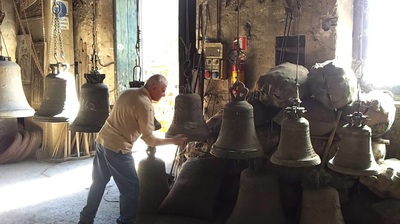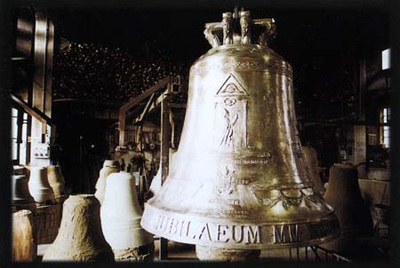 Agnone lies in the rocky mountain region of Isernia in the Molise area of southern Italy. Every Christmas Eve, Agnone hosts the Carnevale Agnonese, including the Ndocciata--a pagan, ritualistic procession of rustic, wooden torches (ndocce) made into bizarre and lethal looking fan shapes which are essentially worn by men dancing through the town. The celebration is accompanied by Zampognari (bagpipers), turning the streets into a river of fire, ending in the main piazza where a huge bonfire is lit. Then the huge bell of the Church of St. Anthony is rung, very fitting since Agnone is known for the last 1000 years for the making of church bells--many of which are installed in the Vatican in Rome. Bringing the pagan into the realm of Christian celebrations, there is also a large Nativity in the piazza. The festival's roots go back even before the time of the ancient Romans... this area was the home of the Samnite tribes, a pagan group with a rich history and even their own alphabet. Samnites used long ndocce made of silver birch pine and dried broom for illumination at night. About a thousand years ago, this tradition was passed down to farmers and shepherds that used the torches both as a source of light and warmth during their times in the mountains. There is a lot of pagan symbolism in the Ndocciata... If the wind blows from the north during the bonfire it was expected to be a good year for crops. A roaring fire from the torches helped to subdue the power of witches and their spells. Young men also made long lasting and beautiful torches to hold under the windows of their intended lover... if the girl looked out onto the flames, their was a match... if water rained down on their torch, they were rejected. I particularly like the modern symbolism of the bonfire... people toss in anything negative... photos or possessions they wish to unburden themselves with--a former lover's picture, a paper with names of their bad thoughts or misguided deeds, a pair of crutches no longer needed, or simply getting rid of old furniture to be replaced with the new. The Nativity display is to celebrate both Christmas and the New Year. --Jerry Finzi If you found this post interesting, please visit our Facebook page and LIKE us. Grazie!
0 Comments
Your comment will be posted after it is approved.
Leave a Reply. |
Categories
All
Archive
June 2024
|







 RSS Feed
RSS Feed
